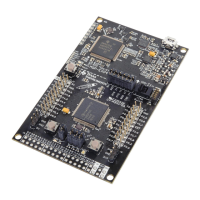MSP430 CPU
MSP430 CPU
As stated earlier, the MSP430 is an efficient, simple 16-bit low power CPU. Its orthogonal
architecture and register set make it C-compiler friendly.
The original MSP430 devices were true 16-bit processors. While 16-bits are quite ideal from a
data perspective, it’s limited from an addressing perspective. With 16-bit addresses, you’re limited
to only 64K of memory – and that really isn’t acceptable in many of today’s applications.
As early as the second generation of MSP430 devices, the CPU was expanded to provide full 20-
bits of addressing space – which provides 1M of address reach. The new CPU cores that support
these enhancements were called CPUX (for eXtended addressing). Thankfully, the extended
versions of the CPU maintained backward compatibility with the earlier devices.
In this course, we don’t dwell on these CPU features for two reasons:
• This change was made long enough to go that all the processors engineers choose today
include the enhanced CPU.
• With the prevalence of C coded applications in world of MSP 430, and embedded processing
in general, these variations fall below our radar. The compiler, handily, manages low-level
details such as this.
MSP430 Workshop - Introduction to MSP430 1 - 13

